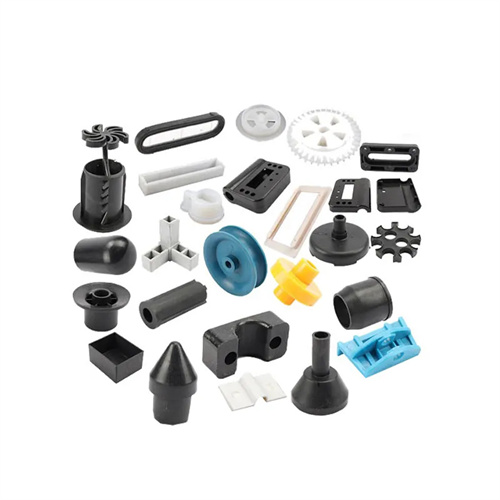Insufficient strength of plastic parts and solutions
Insufficient plastic part strength refers to the breaking, deformation, or cracking of plastic parts under designed loads, making them unable to meet usage requirements and a serious defect that impacts product reliability. Insufficient strength can manifest in various ways: insufficient tensile strength can cause plastic parts to break, insufficient impact strength can cause them to shatter upon impact, and insufficient flexural strength can cause excessive bending deformation under load. For example, a plastic toolbox handle broke when loaded with 5kg due to insufficient tensile strength (designed to be ≥ 30MPa, but only 25MPa in practice). Children’s toys cracked during drop tests due to insufficient impact strength (notched impact strength designed to be ≥ 5kJ/m², but only 3kJ/m² in practice). The root causes of insufficient strength can be traced back to improper material selection, flawed molding processes, and inappropriate structural design.

The mechanical properties of the material itself are the foundation of a plastic part’s strength. Improper material selection is a common cause of insufficient strength. The strength of different plastics varies significantly: the tensile strength of general-purpose plastics (such as PE and PP) is typically 10-30 MPa, while engineering plastics (such as PC and PA66) range from 50-80 MPa. Specialty engineering plastics (such as PEEK) can reach over 100 MPa. Using PE for a component required to withstand a tensile force of 30 MPa will inevitably result in insufficient strength and should be replaced with PA66 or glass-fiber-reinforced PP. Impurities or defects in the material can also reduce strength. For example, dust and metal debris mixed into recycled materials can act as stress concentration points, reducing impact strength by 20-30%. Inadequate material drying (for example, a moisture content of PA66 exceeding 0.2%) can lead to melt degradation, reducing tensile strength by over 15%. For example, a company mistakenly used ABS containing 20% recycled material to produce an electrical appliance housing. The impact strength of the housing dropped from 20 kJ/m² to 12 kJ/m², failing a drop test.

Improper molding process parameters can significantly reduce the actual strength of a plastic part. Poor melt plasticization and excessive internal stress are the main contributing factors. Poor plasticization manifests as uneven mixing and incomplete melting of the melt, resulting in unmelted particles within the part. These particles have a weak bond with the matrix and are susceptible to fracture when subjected to stress. For example, a PP part with poor plasticization due to a too-low screw speed (50 rpm) can result in a tensile strength 10 MPa lower than normal. Excessive internal stress can cause internal tension in the part even without external load, making it prone to compound fracture when subjected to external forces. Causes include: excessive injection pressure (e.g., exceeding the material’s tolerance limit), rapid cooling (causing uneven internal and external shrinkage), and excessive holding time (excessive molecular chain orientation). For example, a transparent PC part with excessive internal stress due to a too-low mold temperature (40°C) can crack even with minimal external force during assembly.

Structural design flaws in plastic parts can lead to stress concentration, causing local strength to fall far short of the overall level, a significant contributor to insufficient strength. Sharp corners, sudden changes in wall thickness, and narrow gaps can amplify stress locally (the stress concentration factor can be as much as 3-5 times). For example, a right-angle corner (R = 0) results in a stress concentration factor of 3, while a radius of 1mm reduces this to 1.2. Lack of transition treatment at the connection between ribs and the main body can cause stress concentration at the base, making the ribs susceptible to fracture. Small hole diameters or close spacing between holes (e.g., a 5mm hole with a 3mm spacing between holes) can weaken the material around the hole, leading to cracking when stressed. For example, a plastic bracket with mounting holes with a 2mm spacing between the holes caused cracks around the holes when screws were installed. Increasing the spacing to 5mm completely resolved the problem.

Systematic measures to address insufficient plastic part strength require coordinated optimization of materials, processes, and structures. Regarding materials, select the appropriate grade based on load requirements (e.g., high-impact ABS for impact loads, PA66 + glass fiber for tensile loads), control the proportion of recycled materials (≤20%), and thoroughly dry the part (e.g., drying PC at 120°C for 4 hours). Regarding the process, optimize plasticizing parameters (screw speed and back pressure) to ensure uniform melt flow. Adopt “low-pressure, low-speed” injection to reduce internal stress (e.g., reducing injection pressure by 10-20%), and increase mold temperature (e.g., increasing PC mold temperature from 60°C to 100°C) to alleviate uneven cooling. Regarding structural design, eliminate sharp corners (R ≥ 0.5mm for all corners), adopt a gradual wall thickness gradient (wall thickness difference ≤ 3:1), round the corners at the base of reinforcing ribs (R ≥ 1/3 of the rib thickness), and increase hole margins (≥ 1.5 times the hole diameter). If necessary, apply surface treatment (such as annealing to eliminate internal stress at 0.8 times the material’s Tg for 2 hours) or local reinforcement (such as inserting metal inserts in weak areas). For example, a plastic gear fractured due to stress concentration at the tooth root. By increasing the root fillet from R0.1mm to R0.3mm and switching to glass fiber-reinforced POM, the strength was increased by 40%, meeting the required performance.
